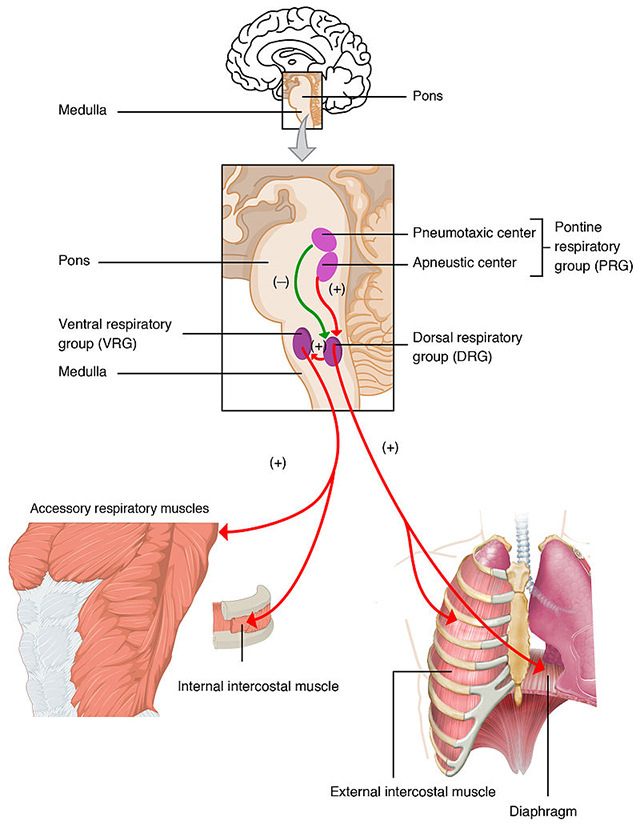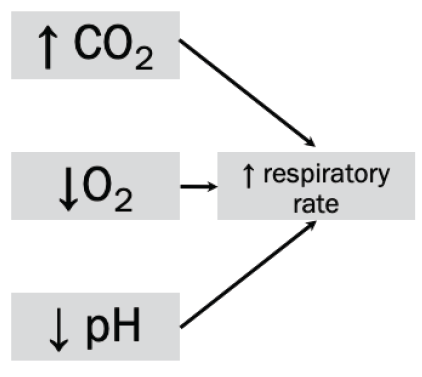Respiratory Control Centers
Objective 9
State the location and function of the respiratory control centers.
Now, let’s take a look at respiratory control centers. The major respiratory control centers are located in the medulla and the pons. We have already learned a little bit about these structures in previous units but let’s take a closer look at their role in controlling the respiratory system.
Medulla

The function of the medulla rhythmicity area, which has both an inspiratory and an expiratory center, is to control the basic rhythm of respiration.
The inspiratory center (also called the dorsal respiratory group) stimulates the diaphragm via the phrenic nerve, and the external intercostal muscles via intercostal nerves. Inspiration normally lasts about 2 seconds.
Most of exhalation is a passive process caused by the elastic recoil of the lungs. Usually the expiratory center (also called the ventral respiratory group) is inactive during quiet breathing (nerve impulses cease for about 3 seconds). During forced exhalation, however, impulses from this center stimulate the internal intercostals and the abdominal muscles to contract.
Pons
Other sites in the pons help the medullary centers manage the transition between inhalation and exhalation.
The pneumotaxic center limits the duration of inspiration, so the lungs don’t get too full.
The apneustic center coordinates the transition between inhalation and exhalation.
Other Sources of Regulation
The medulla and pons control the basic rhythm of respiration, but inputs from other areas also have a role.

- Our cerebral cortex has voluntary control when we want it.
- Emotions (limbic system) affect breathing.
- Hypercapnia (elevated PCO2), low O2, or acidosis (low pH) stimulate more rapid breathing.
- Bronchial stretch receptors, sensing over-inflation, arrest breathing temporarily (Hering-Breuer Reflex)
- The hypothalamus, sensing a fever, increases breathing.
- Moderate pain increases breathing. Severe pain causes apnea — a temporary cessation of breathing.
Media Attributions
- U17-058 Respiratory Centers of the Brain © Betts, J. Gordon; Young, Kelly A.; Wise, James A.; Johnson, Eddie; Poe, Brandon; Kruse, Dean H. Korol, Oksana; Johnson, Jody E.; Womble, Mark & DeSaix, Peter is licensed under a CC BY (Attribution) license
- U17-059 Reflex Gases © Hutchins, Jim is licensed under a CC BY-SA (Attribution ShareAlike) license

